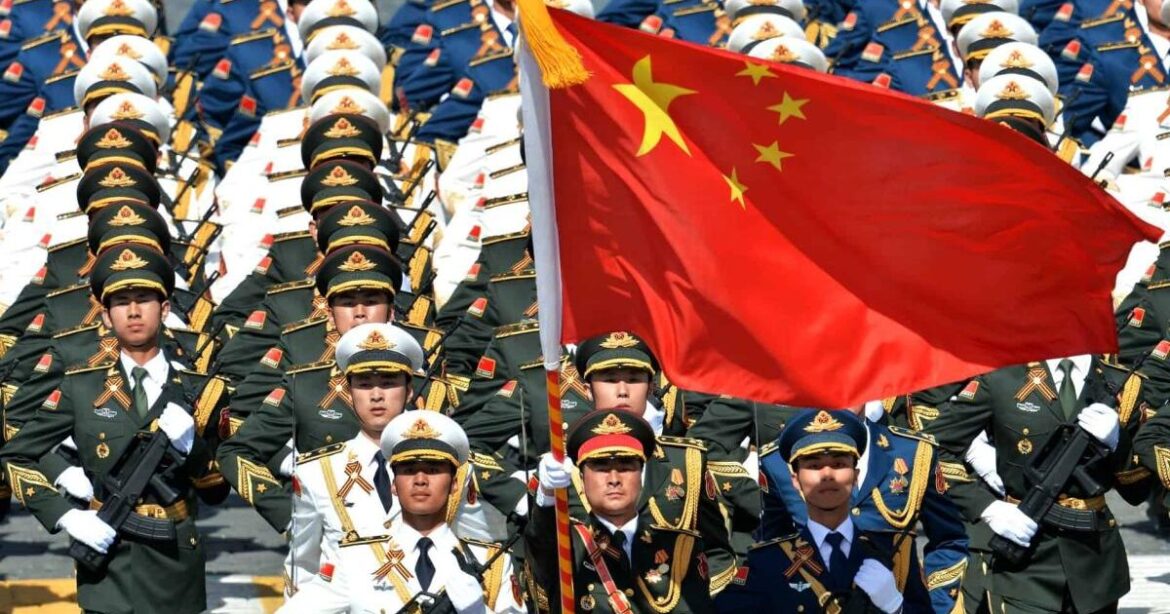The Red Storm Rising: Beijing’s Accelerated War Plans Signal a Global Showdown by 2027
As Beijing barrels toward a self-imposed 2027 military deadline, the Chinese Communist Party’s actions are no longer whispers of ambition—they are declarations of intent. With war drills near Taiwan, hypersonic missile deployment, and overwhelming naval shipbuilding, the CCP is gearing up not just for regional dominance, but for a full-spectrum challenge to U.S. global power.
In April 2025, China launched its largest war exercise yet—Strait Thunder 2025A—with 76 aircraft, 15 warships, and its aircraft carrier Shandong encroaching within 24 nautical miles of Taiwan. This marked the PLA’s closest-ever approach and first live simulation of a total blockade against the island democracy. Analysts now agree: Beijing’s threat is no longer hypothetical. It’s operational.
The 2027 Deadline: What Xi Jinping Really Means
President Xi Jinping’s “2027 readiness order” is more than a military objective—it’s a political mandate. Set to coincide with the 100th anniversary of the PLA, the date is tied directly to Xi’s personal legacy and his ambition to bring Taiwan under Beijing’s control during his reign. Former CIA Director William Burns confirmed that U.S. intelligence believes Xi expects the PLA to be ready to invade Taiwan by 2027—if necessary.
Though some analysts hedge that the date isn’t a guaranteed invasion, Pentagon insiders warn that once China has the overwhelming capability, it may not wait for provocation. A superior force, positioned and ready, only needs a spark.
Total Military Transformation: The 3-Phase War Blueprint
Xi’s sweeping military transformation operates on a three-phase schedule:
-
2027: Invasion-capable
-
2035: Technological parity with the West
-
2049: World-class military with global reach, timed with the 100th anniversary of Communist China
China’s strategy focuses on the “three-izations”:
-
Mechanization (hardware modernization)
-
Informatization (network warfare and real-time command integration)
-
Intelligentization (AI, machine learning, and quantum superiority)
This is no linear growth. This is full-spectrum domination.
The Hard Numbers: China’s Asymmetrical Advantage
-
Missile Arsenal: Over 2,000 aimed at Taiwan, including hypersonics
-
Shipbuilding: 6–8 submarines per year vs. 1–2 for the U.S.
-
Warships: 20–25 launched annually vs. 2–3 in America
-
Defense Budget: $250 billion (2025 est.), but with labor and materials costing 10x less than in the U.S.
-
Nuclear Warheads: 700 by 2027, 1,500 by 2035
-
Strategic Reach: Expanded operations from the South China Sea to the Panama Canal
Admiral Samuel Paparo put it bluntly: China’s navy is undergoing a “rapid boil”—a shipbuilding tsunami dwarfing American output by 200-to-1.
Taiwan Is Only the First Domino
This isn’t just about Taiwan. If China seizes the island, it will gain:
-
Control over half the global semiconductor production
-
Strategic leverage over Japan and the Philippines
-
Military chokeholds on vital Indo-Pacific shipping lanes
-
Forward bases capable of threatening Guam, Hawaii, and the continental U.S.
The PLA has even begun expanding civilian-military dual-use vessels like the Shuiqiao-class amphibious barges, blurring the lines between economic and military infrastructure.
The Clock Is Ticking
Xi Jinping has made it clear: “The Taiwan question cannot be passed down from generation to generation.” His timeline is compressing. The military’s capability is exploding. And the West’s response remains muddled.
The stakes are immense. If China crosses the Taiwan Strait with overwhelming force and the U.S. fails to respond decisively, the post-WWII world order collapses. Allies lose faith. Authoritarians gain confidence. Freedom retreats.
America cannot afford to sleepwalk into another Pearl Harbor moment.
The next one might come not with bombers—but with hypersonic missiles and AI-driven warfare.
The year 2027 isn’t just a deadline. It’s a warning.

